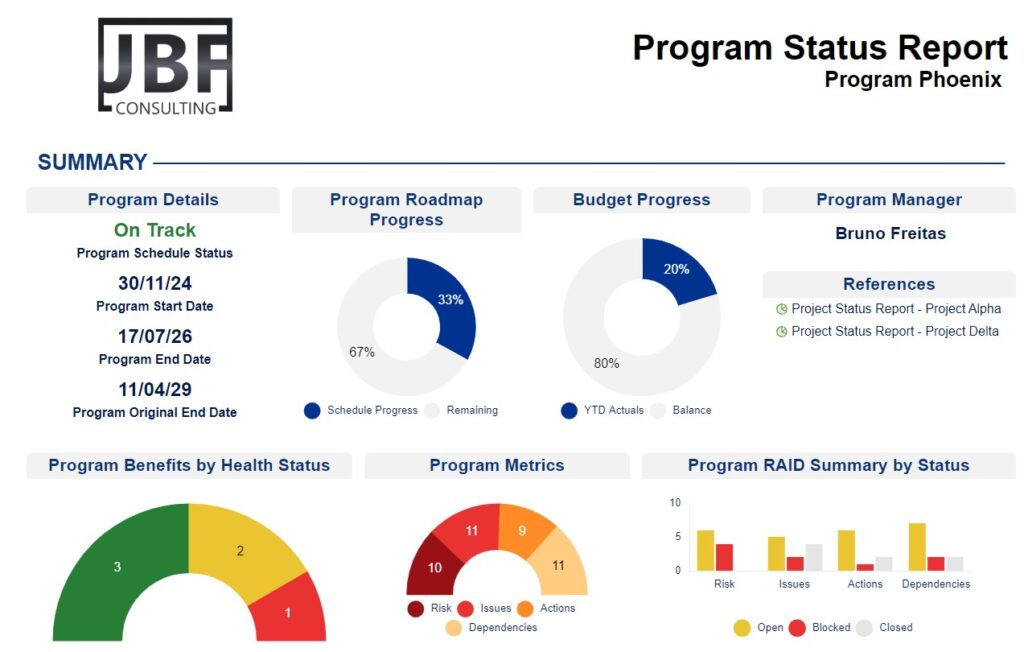Project Management Offices (PMOs) are evolving from traditional administrative functions to strategic enablers of business value. This shift is driven by the increasing demand for real-time insights, evidence-based decision-making, and better alignment with organizational strategy. According to the Project Management Institute (PMI), nearly 80% of high-performing PMOs are leveraging data to drive decision-making and improve project outcomes.
Yet, despite this shift, many PMOs still struggle with manual processes, fragmented tools, and siloed data, making it difficult to provide timely insights to leadership. This is where a robust Project Portfolio Management (PPM) system can become a game-changer. A PPM system is a centralized platform that enables organizations to manage their entire portfolio of projects, programs, and initiatives. It integrates project management processes, provides real-time data visibility, and supports better decision-making across all levels of the organization.
The Pitfalls of Manual Data Aggregation
Before diving into the benefits of a PPM system, it’s important to understand the typical pitfalls that many PMOs face when trying to manage projects without a centralized tool:
1. Inefficiency and Time-Consuming Processes
PMOs often rely on spreadsheets, emails, and disparate project management tools, which are not integrated. Research by Wrike shows that project managers spend an average of 8 hours per week manually collecting and consolidating project data. This not only wastes time but also increases the risk of errors and inconsistencies.
Example: A mid-sized financial institution’s PMO struggled with aggregating data across multiple business units. Project status updates took days to compile, delaying critical decision-making and often leading to missed opportunities.
2. Lack of Real-Time Visibility
Without a PPM system, PMOs often lack real-time visibility into project performance. According to PMI’s Pulse of the Profession Report, 56% of PMOs report that they struggle to provide timely insights to stakeholders due to outdated data. This delay can result in project delays, cost overruns, and poor resource allocation.
Statistic: Gartner found that organizations that lack real-time project visibility experience 20% more project failures due to poor decision-making.
3. Inconsistent Data and Reporting
When project data is manually aggregated from various sources, it often leads to inconsistencies. Different departments may use different metrics, definitions, and tools, making it difficult to create a unified report. This inconsistency undermines stakeholder confidence and makes it challenging to assess the true health of projects and portfolios.
Statistic: A study by Forrester Consulting found that 43% of PMOs report issues with data quality, citing inconsistent metrics and fragmented reporting as major challenges.
The Value of a PPM System for PMOs
Implementing a PPM system can address these common pitfalls and offer a wide range of benefits that transform how PMOs operate. Here’s how:
1. Centralized Data for Better Decision-Making
A PPM system provides a single source of truth, centralizing all project-related data. This eliminates the need for manual data aggregation and ensures that everyone is working with the most up-to-date information.
Statistic: According to PMI, organizations that use a centralized PPM system are 38% more likely to achieve project objectives on time and within budget.
Actionable Recommendation: Choose a PPM system that integrates with your existing tools (e.g., ERP, CRM, and HR systems) to ensure seamless data flow and reduce the need for manual updates.
2. Improved Portfolio Visibility and Risk Management
With a PPM system, PMOs gain real-time visibility into project performance across the entire portfolio. This enables proactive risk management and helps identify issues before they escalate.
Example: A large retail company implemented a PPM system and reduced the time spent on risk assessment by 30%, allowing project managers to focus more on mitigation strategies rather than data collection.
Statistic: Gartner reports that organizations with real-time portfolio visibility are 25% more likely to detect project risks early, reducing the likelihood of project failure.
Actionable Recommendation: Leverage built-in risk management features in your PPM system to create a risk register, assign risk owners, and track mitigation actions in real-time.
3. Enhanced Resource Management and Utilization
A common challenge for PMOs is managing resources effectively, especially in organizations with multiple concurrent projects. A PPM system provides tools for resource planning, capacity management, and forecasting, ensuring that resources are allocated optimally.
Statistic: According to a survey by Wellingtone, 62% of organizations report that resource management is a top challenge. However, those using a PPM system report a 15% improvement in resource utilization.
Actionable Recommendation: Use the resource management features in your PPM system to create a centralized resource pool, track availability, and plan allocations based on real-time data.
4. Accurate Reporting and Analytics
A PPM system simplifies reporting by providing automated dashboards and analytics that offer insights into project performance, financials, and resource utilization. This helps PMOs deliver accurate and timely reports to stakeholders without spending hours on manual data consolidation.
Statistic: PMI’s Pulse of the Profession reports that PMOs using PPM systems have a 30% higher project success rate due to improved reporting and data-driven insights.
Actionable Recommendation: Set up customized dashboards for different stakeholder groups, such as executives, project managers, and team members, to provide relevant insights tailored to their needs.

The ROI of Implementing a PPM System
Investing in a PPM system can yield significant returns, both in terms of direct cost savings and improved project outcomes. Let’s look at some statistics:
-
Forrester Research found that organizations implementing PPM systems see an average ROI of 250% within the first three years.
-
Gartner estimates that companies using a PPM system can reduce project costs by up to 20% by optimizing resource utilization and eliminating inefficiencies.
-
According to PMI, organizations with a mature PPM system in place experience a 15% increase in project success rates and a 10% reduction in project cycle times.
Example: A technology company implemented a PPM system and reduced its project cycle times by 25%, enabling faster time-to-market for new products and improving overall customer satisfaction.


